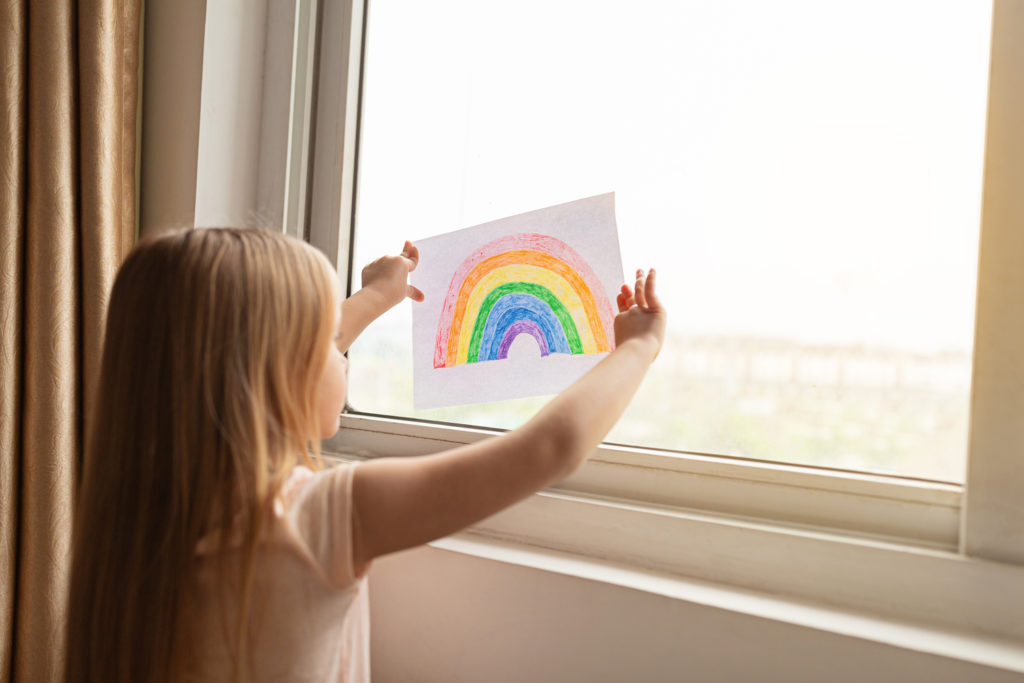 It goes without saying that stress is all around us—and we’re all trying to keep our sanity. It’s also hard to listen to others when we ourselves (adults/parents) are feeling overwhelmed, distracted and so forth.
It goes without saying that stress is all around us—and we’re all trying to keep our sanity. It’s also hard to listen to others when we ourselves (adults/parents) are feeling overwhelmed, distracted and so forth.
And it’s essential to helping children make sense of this, to help navigate, to help relieve them of anxiety. Here’s some information and tips on Active Listening that hopefully might help you, help them.
What is Active Listening?
- Active Listening is feeding back the sender’s message in the listener’s own words; reflecting or mirroring the feelings and content of the sender’s communication. It is the most powerful of the helping skills.
- Active Listening is the skill that will best express the three helping characteristics: empathy, acceptance, genuineness, and assist the child in resolving his/her problem.
- Active Listening is a special way of reflecting back what the child has expressed to let her/him know you are listening and to check your understanding of the child’s meaning.
- Active Listening is a restatement of the child’s total communication, both the facts/topics of the message and the accompanying feelings.
- Active Listening requires that you put yourself in the child’s position, try to get a sense of the child’s thoughts and feelings and then share your understanding with warmth and acceptance.
- Active Listening enables you and the child to understand the actual experience the child is having.
Such mutual understanding enables the child to express and explore the problem and move toward resolving it.
Sometimes, an upset child knows exactly why s/he is upset, can express the problem clearly and resolve it entirely on his or her own.
Most of the time, however, troubled children aren’t sure of their feelings, express themselves only in “cues and clues,” and seek out someone who will listen with understanding.
For example, a five-year-old child might be experiencing fear, comes to you with tears in her/his eyes, but expresses it as a question, e.g. “Do you think I’ll ever get to play with my friends again?” The Active Listening parent takes his or her impression of what the child is experiencing, not necessarily expressing, and feeds it back to the child for confirmation or clarification.
The parent’s Active Listening response might be “You really miss your friends and it’s scary not knowing when you will see them.” followed by the child’s confirming message “Uh huh!”
Active Listening relieves “emotional flooding.” When the child’s feelings overwhelm their thoughts, Active Listening reduces their feelings and frees up the child’s ability to think clearly and solve their problem.
Active Listening is helpful, even when it is slightly off-target, because it aids the child in thinking about the thoughts or feelings he or she has just expressed.
Even if the parent’s Active Listening “guess” is incorrect, the child will almost always correct it and continue to talk.
If, on the other hand, the Active Listening response was accurate, then the child will feel understood, will have experienced a release of pent-up feelings and will have gained insight about the problem.
Here is a wide variety of video clips about Active Listening to check out as well:
- 1:44 minutes – Clip from “Inside Out” (Disney-Pixar movie), “Sadness” character listening to “Bing Bong”: https://www.youtube.com/watch?v=t685WM5R6aM
- 4 minutes – Clip from “Everybody Loves Raymond”, P.E.T. class scene between Raymond and instructor: https://www.youtube.com/watch?v=tbQWpx-H0ms
- 2 minutes – Clip from “Working Together: the Gordon Model in Action” (video for trainers) – Active Listening at work: https://www.youtube.com/watch?v=Hkn-AKCS2rw&t=10s
- 2 minutes – Clip from “Everybody Loves Raymond”, between Raymond’s parents with Raymond coaching
- 15 minutes – Audio only – Dr. Thomas Gordon on Active Listening: https://www.youtube.com/watch?v=y32aiztIekQ&t=17s

